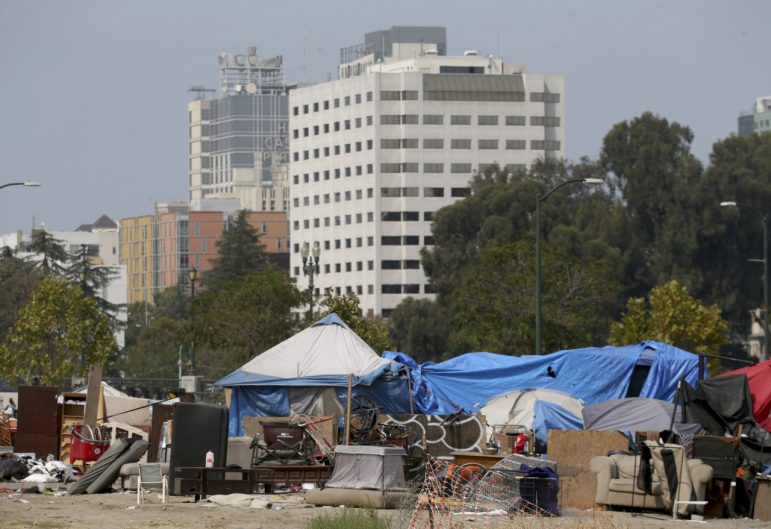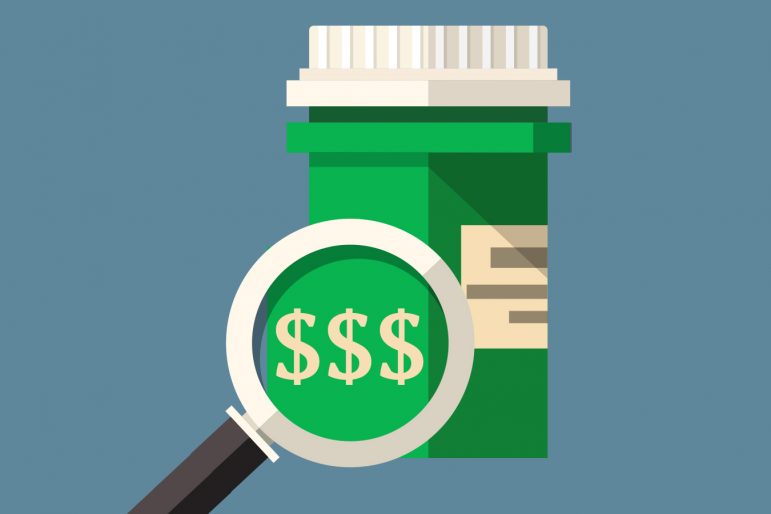With a deluge of dollars flowing into California’s coffers from state taxpayers and Uncle Sam, Democratic leaders in the Legislature have agreed on a budget plan that would spend slightly less than what Gov. Gavin Newsom proposed, while still pouring billions of dollars into helping Californians recover from the pandemic.
The $267.1 billion plan the Assembly and Senate announced Tuesday largely mirrors the proposals Newsom laid out last month in his $267.8 billion budget. It embraces Newsom’s “Golden State Stimulus,” which will send at least $500 to every household that makes as much as $75,000 a year. It would pour even more into grants to help small businesses and into payments toward unemployment insurance. But it would launch fewer new social programs than the Democratic governor proposed.
“This is a historic budget,” Assembly Budget Committee chairperson Phil Ting said in a video conference with reporters. “It’s the largest budget in California state history.”
With leaders of both houses of the Legislature on the same page, negotiations now turn to Newsom as they work to reach a final agreement before June 15. Here are a few key areas the two sides must reconcile as they make decisions that will impact millions of Californians.
Housing for people who are homeless
Lawmakers agreed with most of Newsom’s proposals to spend billions of dollars to alleviate homelessness, mostly by buying hotels and motels. But they differ on the timing. The Legislature proposes spending $8.5 billion in new funding over two years, compared with the governor’s $6.8 billion in the next year alone.
“We want to provide housing for our unhoused people, we do not want people living on the streets in California,” said Sen. Nancy Skinner, a Berkeley Democrat who leads the Senate budget committee.

The Legislature allocates $1 billion in annual funding for cities and counties to address homelessness over the next four years, with lawmakers saying the funding will be tied to strong oversight and accountability. Newsom did not include such ongoing, flexible funding for local governments in his budget.
“This actually would be the first of its kind,” said Chris Martin, policy director at Housing California, whose organization has been pushing for such funding for years. “This is the first time we’re putting a general fund allocation to the issue voters claim is number one.”
Rebuilding public health
Pandemic-weary local public health officials had criticized Newsom’s budget for not including any significant money to rebuild the state’s public health infrastructure battered by COVID-19. The Legislature took care of them, calling for an additional $200 million annually to help public health departments add staff and modernize equipment.
“California legislators have taken the lessons of COVID-19 to heart and put forward a plan … so California is never again underprepared and under resourced when the next public health crisis hits,” Michelle Gibbons, executive director of the County Health Executives Association of California, said in a statement.
Overall, the Legislature’s plan sets aside $403 million annually to address what it called “the decades-long underinvestment in our public health system that left us less prepared to address the pandemic.”

It also sets aside another $100 million annually for community health organizations working on health equity and racial justice issues — funding Newsom did not include. Skinner said the pandemic had laid bare the need for more attention to the interplay between race and health.
“When we look at who died of COVID, you’re far more likely in California to die of COVID — and across the country — if you’re Black or brown,” she said.
“The funding that we have created in that regard is going to go very much to community-based entities who have the direct relationships with those people in our communities that are experiencing this disparity.”
Helping undocumented immigrants
Legislators want to go further than Newsom to provide a state-funded safety net for undocumented immigrants, who are excluded from most federal benefits, including food aid, unemployment insurance and stimulus checks.
The Legislature wants to make low-income undocumented immigrants 50 and older eligible for Medi-Cal, the government-subsidized health insurance plan, while Newsom proposed offering it to those age 60 and up.
Lawmakers also proposed spending $550 million annually to offer food aid to California immigrants currently left out of the federally-funded CalFresh program, including undocumented immigrants, young adults brought to the country illegally as children, and immigrants from countries affected by armed conflict or natural disaster. Newsom’s budget did not include any food aid specifically for immigrants.
“We have the highest rate of hunger insecurity that we’ve faced since the 1960s, so we have huge historic investments towards ending hunger,” Skinner said.
Increasing access to college
More students would get financial aid and the University of California would offer more spots to in-state students under the Legislature’s plan to infuse the higher education system with cash — significant proposals that Newsom did not include in his budget.
Lawmakers want to spend $613 million to bolster the state’s main financial aid program, the Cal Grant, which they have long sought to overhaul. The expansion would happen in phases, with 133,000 more community college students eligible this fall and another 50,000 students added in 2022.

The Legislature also proposes to spend big to free up enrollment space at public universities, including the state’s three most sought-after campuses –– Berkeley, UCLA and UC San Diego. The Legislature wants to pay those three campuses to not enroll about 900 out-of-state students a year, freeing up more than 2,700 slots in three years that would go instead to California residents, starting in fall 2022. Because out-of-state students pay much higher tuition, the state would pick up the tab for that lost revenue, totaling $180 million over three years. The ultimate goal is to cap out-of-state undergraduate enrollment at the three coveted campuses at 18% –– making good on a budget deal from several years ago.
Lawmakers’ budget proposal also includes $67 million to add 6,200 enrollment slots across the entire UC and $81 million to add 9,400 slots at Cal State campuses. The expansion would take effect in fall 2022.
They also want to spend $540 million so that college students would have to borrow less or nothing for college.
“It’s a huge, huge proposal for higher-ed, and it also ensures that not only do you get more access to UC and CSU, but that you’re going to graduate without any debt,” said Ting, a San Francisco Democrat.
One program on Newsom’s wish list actually would get less money under the Legislature’s plan. His $2 billion proposal to give K-12 students at least $500 in college savings accounts would decrease to $1 billion and be reserved for newborns.
CalMatters reporters Jackie Botts, Barbara Feder Ostrov, Manuela Tobias and Mikhail Zinshteyn contributed to this story.
